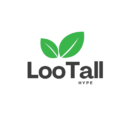In the crowded world of eCommerce, simply having great products isn’t enough. Your brand must stand out and your lead generation strategy needs to be sharp. Online branding builds trust, creates recognition, and connects emotionally with your target audience. Meanwhile, lead generation ensures a steady flow of potential buyers into your sales funnel.
This article will guide you through creating a memorable brand identity and generating leads that convert into loyal customers.
1. Crafting a Strong eCommerce Brand Identity
Your brand is more than a logo—it’s the personality, story, and promise behind your store.
Key elements of online branding:
- Brand Name & Logo: Memorable, relevant, and easy to pronounce. Keep your logo simple yet distinctive.
- Color Palette & Typography: Consistent colors and fonts build recognition and emotional connection.
- Brand Voice: Are you fun and casual or sleek and professional? Keep your tone consistent across all platforms—website, emails, and social media.
- Mission & Values: Let customers know what you stand for. This builds trust and loyalty.
- Visual Identity: Product photography, lifestyle images, and overall design should reflect your brand’s vibe.
Pro tip: Create a brand style guide to keep your look and tone consistent across every touchpoint.
2. Build a Branded Online Experience
Your website is your storefront. It should feel like a seamless extension of your brand.
Focus on:
- Branded homepage and banners
- Custom packaging with your logo
- Clear brand messaging on your About and product pages
- User-friendly design and navigation
Don’t forget: first impressions count. Make sure your site is mobile-optimized, fast-loading, and visually aligned with your brand.
3. Lead Generation: Attract, Engage, Convert
Once your branding is solid, it’s time to drive potential customers into your ecosystem.
Top lead generation strategies:
1. Email Sign-Up Incentives
- Offer 10% off for first-time buyers.
- Provide a free shipping code or downloadable guide.
- Use pop-ups that are timed well and not intrusive.
2. Social Media Campaigns
- Run giveaways or contests to boost engagement and collect emails.
- Use Instagram and Facebook stories to drive swipe-ups and DMs.
3. Content Marketing
- Start a blog with product guides, style tips, or tutorials.
- Create videos—unboxings, how-tos, and behind-the-scenes branding.
4. SEO & Organic Traffic
- Optimize product pages and blog content for search engines.
- Use keywords related to your niche to attract ready-to-buy visitors.
5. Paid Ads with Lead Magnets
- Facebook and Google Ads targeting lookalike audiences.
- Drive traffic to landing pages offering discounts or value-packed downloads.
6. Referral Programs
- Reward existing customers for bringing in new leads.
- Tools like ReferralCandy or Smile.io make it easy.
4. Capture Leads with Strategic Tools
Integrate tools that help capture and manage leads effectively:
- Klaviyo or Mailchimp – for email automation.
- OptinMonster – for exit-intent popups and forms.
- Privy – for building lead forms and SMS/email campaigns.
- HubSpot – for CRM and lead nurturing.
Segment your leads by behavior, interest, or purchase history to personalize future marketing.
5. Nurture Leads into Loyal Buyers
Generating leads is just the start—what you do next matters.
Lead nurturing strategies:
- Welcome email series introducing your brand story and bestsellers.
- Abandoned cart emails with urgency or discount incentives.
- Educational emails (e.g., “How to style your purchase,” “Behind the brand”).
Build relationships with valuable, non-pushy content. People buy from brands they trust.
Conclusion
In today’s competitive eCommerce space, strong branding attracts attention—and effective lead generation converts it into revenue. Build a brand that speaks directly to your audience and use smart tactics to keep your sales funnel full. With a strategic balance of visual identity, storytelling, and targeted lead generation, your store won’t just be another shop online—it’ll be a brand people remember and return to.
